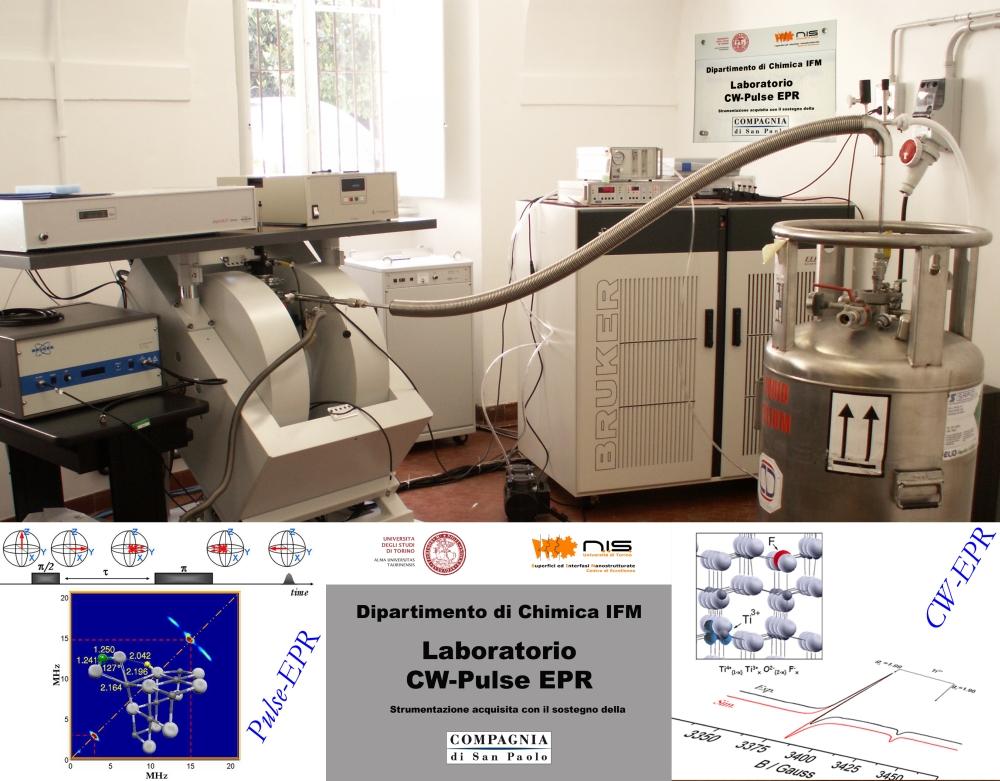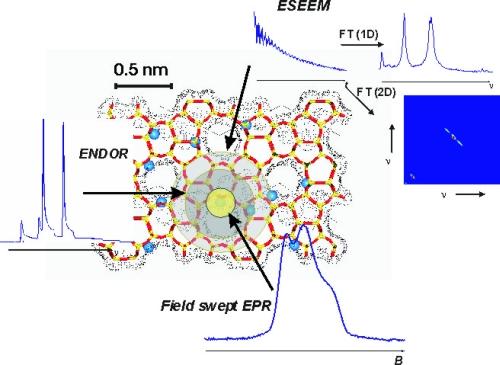Electron Paramagnetic Resonance
Equipment
Electron Paramagnetic Resonance (EPR) is a spectroscopic method for characterizing structure, dynamcs and spatial distribution of paramagnetic species. EPR is therefore the method of choice to investigate free radicals, triplet states, compounds with transition metal ions and rare earth as well as defect centers in solid state systems. Diamagnetic compounds can be studied by means of spin probes (e.g. stable paramagnetic systems such as nitroxides). The technique can be applied to the study of crystalline systems as well as systems that lack long-range order, such as glasses and frozen solutions and in many cases liquid solutions. Depending on the width of the EPR spectrum as few as 1011 spins can be detected at conventional X band (9.5 GHz) frequency. The history of EPR is closely related to that of NMR. During the first decades after the introduction of these techniques in the fifties, both NMR and EPR were so-called continuous-wave methods, where the absorption of continuously radiated radio-frequency or microwaves is detected. With the introduction of Fourier-transform techniques in the late seventies, NMR received an enormous impetus. The evolution of EPR towards pulse methods is however lagging behind that of NMR. Since sophisticated electronics and fast computers are needed to generate microwave pulses and to detect transient signals in the nanosecond time scale, pulse EPR became only popular more than a decade after the introduction of pulse NMR. The advantages of pulse EPR compared to conventional continuous-wave EPR include again the large variety of experimental schemes and the multi-dimensionality, which allow for a much more detailed investigation of paramagnetic compounds. However, in contrast to NMR, continuous-wave and pulse EPR are still to a large extend complementary.
Within the NIS centre the EPR group applies this technique to the study of surface radicals and defective states in inorganic solids. Recently the facilities have been implemented recently by the acquisition, with the support of the “ Compagnia di San Paolo”, of a Bruker ELEXYS 580 pulse EPR / pulse ENDOR spectrometer. This spectrometer allows for advanced pulsed experiments and will greatly enhance the potential of the technique allowing for a dramatic increase in spectral resolution and level of information. Depending on the specific problem in fact, different methods have to be used to achieve detailed information about a paramagnetic species. Field-swept EPR techniques (including continuous-wave and pulse methods) reveal information about the electron Zeeman interaction (the electronic state of the material under study), about the fine structure (coupling between unpaired electrons) and about strong hyperfine couplings (interactions between the unpaired electron and the surrounding nuclei). A strong hyperfine interaction usually means that the nucleus is in the close vicinity of the unpaired electron. The interactions with more distant nuclei can be investigated by means of continuous-wave or pulse ENDOR, and electron spin echo envelope modulation (ESEEM) spectroscopy.
The following EPR facilities are currently available in the group:
- X band (9.5 GHz) pulse EPR spectrometer (Bruker ELEXYS 580)
- X band (9.5 GHz) CW EPR spectrometer (Bruker ESP300)
- X band (9.5 GHz) CW EPR spectrometer (Bruker EMX)
- Using an Oxford Instruments flow cryostat measurements can be done in the 4-298 K range. In situ irradiation with monochromatic wave lengths is possible.




